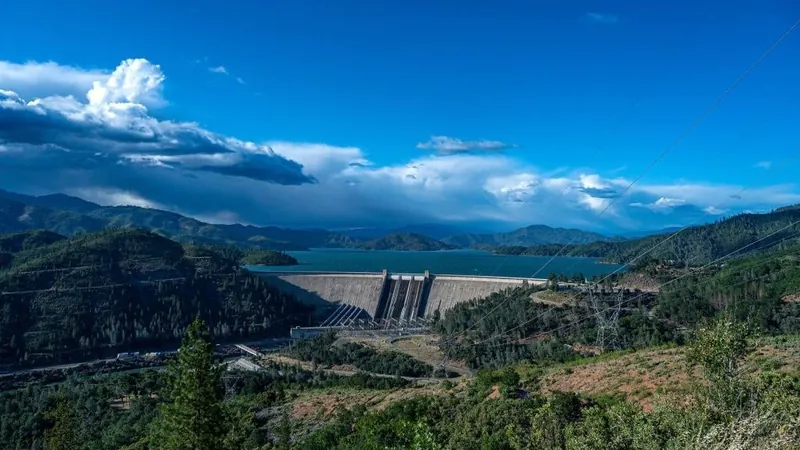
Unlocking the Mystery: How Microbes Could Make or Break CO2 Storage Success
2025-05-18
Author: Sarah
A Pioneering Research Initiative on Microbial Impact in CO2 Storage
In a groundbreaking new project, researchers are delving deep into the hidden world of microbes lurking in underground CO₂ storage sites, aiming to unlock their potential impact on carbon capture and storage (CCS) efforts.
As the UK gears up to achieve Net Zero emissions by 2050, reliable and long-lasting geological storage of carbon dioxide is taking center stage. The prime candidates? Depleted oil and gas reservoirs, along with saline aquifers, which could serve as viable solutions for secure CO₂ sequestration.
The Microbial Mystery Beneath the Surface
However, these underground locations are teeming with diverse microbial ecosystems, and our understanding of how they react to CO₂ injection remains alarmingly limited. This lack of knowledge poses significant risks to the integrity of long-term CO₂ storage.
While some microbial interactions might facilitate the sequestration process, others could spur methane production, corrode storage infrastructure, or even compromise the ability to inject CO₂ in the first place.
Collaboration Between Academia and Industry
The ambitious project, led by The University of Manchester in collaboration with global energy giant Equinor ASA, aims to investigate the responses of subsurface microbial communities to CO₂ storage—shedding light on both threats and opportunities that these microbes present.
Expert Insights and Future Prospects
Project Principal Investigator, Prof. Sophie Nixon, emphasized the urgency of this research. "For two decades, we've tested underground CO₂ storage in real-world conditions, yet our knowledge about how this affects microbes far beneath our feet is still nascent. Previous research indicates that CO₂ injection alters microbial communities, sometimes leading to initial decline and subsequent recovery, which could change the fate of stored CO₂ over time. But with modern metagenomic techniques now available, we’re finally able to gain a clearer picture of these hidden communities and their behaviors."
A Two-Year Deep Dive into Microbial Dynamics
Over the next two years, the project team will collect samples from saline aquifers and oil fields to analyze how underground microbes react to heightened CO₂ levels, leveraging advanced techniques such as geochemistry, gas isotope analysis, and bioinformatics.
Co-Investigator Dr. Rebecca Tyne pointed out a critical gap in current CCS research: "Up until now, the focus has largely been on the physicochemical properties of CO₂, with minimal attention given to the microbial processes that can significantly influence storage outcomes. My research has shown that processes like methanogenesis can alter fluid compositions and dynamics within storage reservoirs."
Shaping the Future of Carbon Capture and Storage
Currently, regulations set by the North Sea Transition Authority mandate comprehensive monitoring strategies for carbon capture and storage sites, but microbial monitoring has yet to be integrated into these frameworks. The innovative findings from this project aim to bridge that gap, informing industry practices and contributing to major scientific publications.
Project Lead Leanne Walker stated, "This research will illuminate how underground microbial communities are impacted by CO₂ storage—their responses, potential risks, and benefits. Our findings will be crucial in assessing microbiological risks at both existing and planned CCS sites, ultimately ensuring more secure and efficient long-term CO₂ storage solutions."



 Brasil (PT)
Brasil (PT)
 Canada (EN)
Canada (EN)
 Chile (ES)
Chile (ES)
 Česko (CS)
Česko (CS)
 대한민국 (KO)
대한민국 (KO)
 España (ES)
España (ES)
 France (FR)
France (FR)
 Hong Kong (EN)
Hong Kong (EN)
 Italia (IT)
Italia (IT)
 日本 (JA)
日本 (JA)
 Magyarország (HU)
Magyarország (HU)
 Norge (NO)
Norge (NO)
 Polska (PL)
Polska (PL)
 Schweiz (DE)
Schweiz (DE)
 Singapore (EN)
Singapore (EN)
 Sverige (SV)
Sverige (SV)
 Suomi (FI)
Suomi (FI)
 Türkiye (TR)
Türkiye (TR)
 الإمارات العربية المتحدة (AR)
الإمارات العربية المتحدة (AR)